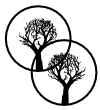“In an Unspoken Voice: The Nonverbal Narrative in Transforming Traumatic Experience”
Lecture by Peter Levine, PhD, founder Somatic Experiencing Trauma Institute,
http://www.traumahealing.com/
Author of “In an Unspoken Voice: How the Body Releases Trauma and Restores Goodness”
Levine described treatment for birth trauma and adult trauma and offered videos of treatments, based in a somatic/sensory approach to treatment rather than verbal. “In the fragmented, dissociated response to trauma, words aren’t so helpful.” People “stiffen, retract, and collapse when they can’t respond to perceived threat.” Treatment is based on finding ways for the body to contradict experiences of freezing, helplessness and return the nervous system to a “socially engaged state,” borrowing from Porges’ Polyvagal Theory.
“There is a voice that does not use words,” and Levine’s ‘voice’ is movement, gestures, voice, and touch. “Touch is a tricky subject” and “I wouldn’t use touch until it was safe,” says Levine. For infants, trauma denies the “wonderful blissful parasympathetic molding” that requires relaxation and vulnerability. Guarded infants are unable to receive the nourishment of touch and relaxation.
Much emphasis is placed on the adults when examining attachment behavior and it’s important to remember that a traumatized child is unable to produce the normal cues and signals that evoke attachment behavior in the caregiver. Essentially the child is trapped in a “hypo” state, shut down and left there. Levine follows Porges and enumerated the hierarchical transition from SES (social engagement system) to fight/flight to energy conserving freeze, which can be seen in adults as despair.
In a video clip of an infant that had experienced a difficult birth that included being pulled from the womb by a vacuum gripping his head, Levine narrated his and the child’s activity. After some rhythmic rattling, the child bids to push away Levine’s hand, although the bid is weak and incomplete. Succeeding attempts become stonger and eventually the infant invokes his leg muscles and pushes. “Birth is cooperative and the child has to push with his legs.” Levine tracks the infant’s growing muscular participation, eye gaze, skin color change, and breath changes. “It’s important to get contact and touch in the lower back, which is a reflex area,” explaining his contact with the infant after stiffening. The child is able to relax enough to receive Mom’s “molding” (shared parasympathetic contact) and renegotiates the disrupted bonding. The child cries, which was rare before the treatment, and relaxes.
Years ago Peter Levine was struck by a car and at the conference he told the story. Laying on the ground, in and out of consciousness, a pediatrician asked him what she could do for him. Levine held her hand and calmed himself enough to “go into my body.” Levine was able to shake and tremble, to experience sorrow and also rage. Rage is always part of the process of trauma, according to Levine. “You have to have someone to blame.” He reported that this process of going inward and paying attention to the emotions and body sensations kept him from lasting psychological impact.
Levine offered a sequence of videos detailing the treatment of an Afghanistan veteran who was blown up by two improvised explosive devices. “We must consider what fear and trembling mean,” says Levine. The starting point in adult trauma is often a sunken posture and feelings of shame. In the blast, the soldier’s head oriented toward danger and and his body went into flexion, protection, and “turtled.” The body had not yet discharged the “turtle” state.
The client reported sensitivity to light, headaches, lack of concentration, and “dealing with a lot of crap.” While the man described some of the events of the day of his injuries his body twitched involuntarily. Levine pointed out in the video how the man’s shoulders, neck, and jaw were completely contracted and recommended “unglueing” one part from the other. Levine began by asking the client to slowly open and close his mouth. Levine instructed the client to stop the motion when he experienced sensations and allow time for the sensations to shift (change in location) before continuing with the jaw movemement. The client reported a “wierd tingling feeling” throughout his entire body. Next he was directed to voice “voo” in order to vibrate in the gut. This sound requires exhalation, attention to vocal chords, and resources the client. Levine tracked coloration, body posture, and facial expressions and client reported “feeling very nice” which was significantly different from his starting affect.
Levine then refered to a chart that other speakers throughout the day would display different versions of. This chart indicates the passage by the client through different physiological states of arousal (hyper, optimal, and hypo). Levine spoke about practicing “containment” and “modulation” of hyperaroused states and “potentiating the trauma response.”

Ogden, Pat (2000) retrieved from http://www.sensorimotorpsychotherapy.org/articles.html
Levine also displayed a video of his work with a child that had accidentally fallen into a jacuzzi and nearly died. The child and his sibling played and Levine gently directed them to recall the event. The child began to experiment with his experience by falling off of a low pillow into Levine’s arms. In time the child took greater risks, eventually allowing a backwards fall. Through the video Levine stopped to point out “discharges” evidenced by shaking, posture, and coughing. The child’s mother reported no coughing since the incident so coughing was significant.
Levine offered a treatment path appropriate for unresolved trauma that induces fragmented and dissociated states, characterized by stiffening, retraction, collapsing and rigidity. “Make the smallest movement, sense the activation, allow it to settle, then do some more.”
